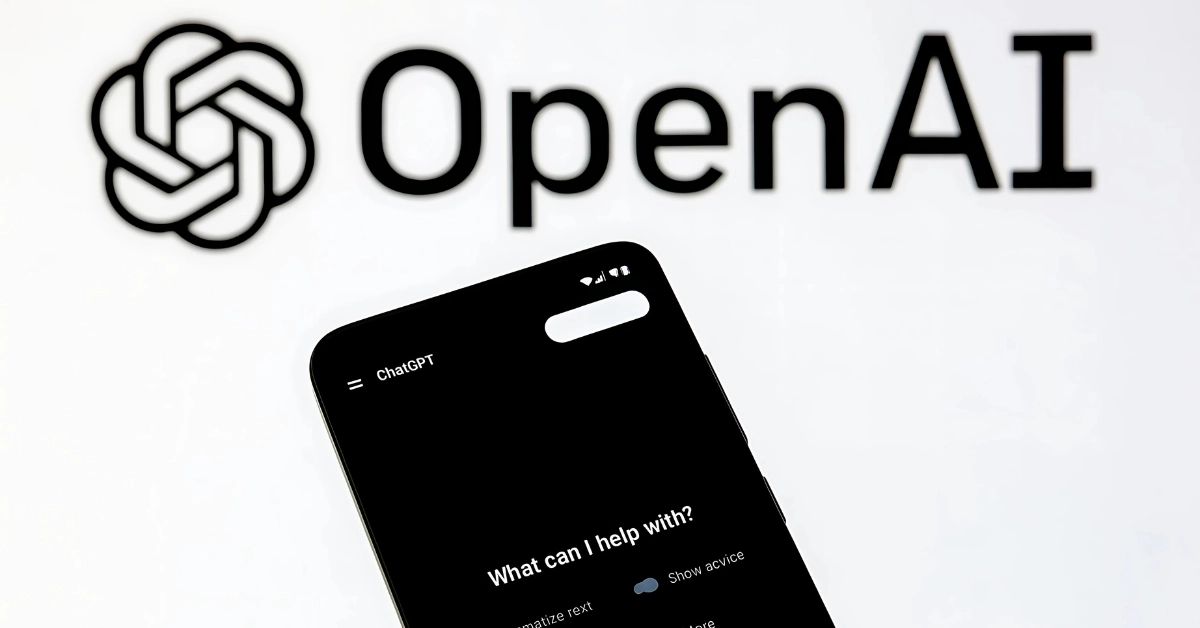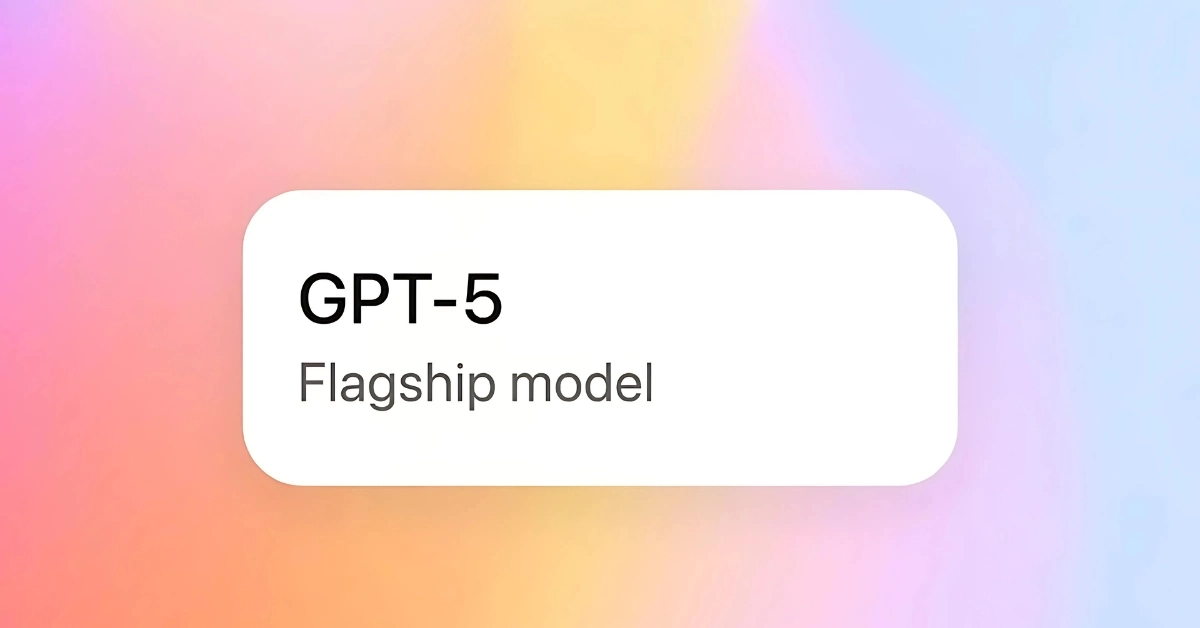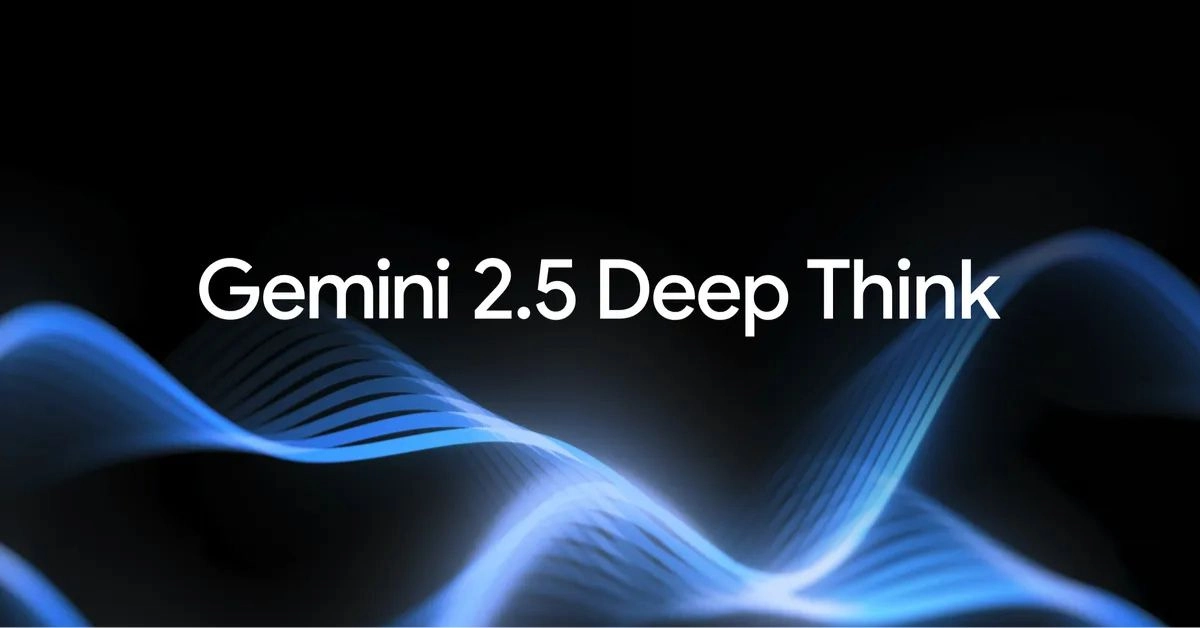By Mohit Singhania | Updated: 27 July 2025
Why Everyone’s Suddenly Talking About “Agents”
Let’s be honest. AI has gotten boring.
One year ago, everyone was posting ChatGPT screenshots. Today? The hype feels stale. LLMs respond well, but they don’t do anything unless you poke them. Every task still feels like a back-and-forth. You prompt. It replies. You clarify. It responds. And the cycle drags on.
But something’s shifted in 2025. You’re going to hear this word a lot more: Agents.
Not chatbots. Not plugins. Not “AI assistants” that need you to handhold them step by step. Agents are different. You give them a goal, and they figure out the rest.
Want a research report? They’ll fetch the sources, skim the data, organize it, and drop the file in your folder.
Need a growth plan for your new app? They’ll scrape your competitors, analyze reviews, run projections, and prepare the slides.
This isn’t science fiction anymore. Companies like OpenAI, Google, Microsoft, and even Walmart are already deploying these systems in the real world.
This is the start of something bigger than another AI model upgrade. Agentic AI changes how work happens and who gets to do it.
In this guide, I’ll break it all down. What agentic AI actually means, how it works behind the scenes, what tools are using it right now, and why it’s not just a buzzword. You’ll also see why this is the most important shift in AI since ChatGPT itself and what it means for creators, coders, and founders, especially in India.
What Is Agentic AI, Really?
Agentic AI isn’t just another fancy label for smarter chatbots. It’s a shift in how AI behaves.
Think about most AI tools you’ve used so far. Whether it’s ChatGPT, Gemini, or Claude, they all follow the same pattern. They wait for your input, respond, and stop. You ask, they answer. You guide, they follow.
Agentic AI flips that idea on its head.
Instead of reacting to your every move, it takes initiative. You give it a goal, not a prompt. From there, it plans, executes, adapts, and even self-corrects without you having to babysit every step.
Let’s say you want an AI to create a competitor analysis report. A regular chatbot might help you structure it, maybe even generate some sample content. But an agent? It would:
- Search the latest product pages and pricing
- Scan customer reviews for patterns
- Build charts using real data
- Draft the final document
- Package it and even email it to you
All that without needing 20 prompts in between.
This is the core idea: Agentic AI doesn’t just answer. It acts.
It’s not about bigger models or smarter replies. It’s about systems that behave more like teammates — ones that know what to do next, learn from mistakes, and work toward a goal the way a human would.
And once you experience it, there’s no going back to traditional AI.
📚 Want a simpler overview first?
If you’d prefer a beginner-friendly intro to AI agents before diving deeper into this guide, check out our explainer here:
👉 AI Agents Explained (2025): What They Are, How They Work, and What’s Coming Next
How Agentic AI Actually Works (Behind the Scenes)
Agentic AI sounds impressive, but what’s really going on under the hood?
Let’s break it down without getting lost in jargon.
Every agentic system has the same basic goal. Take an outcome and figure out the steps to reach it. Not by running a single prompt, but by thinking, acting, and adjusting along the way.
To pull that off, agents need four key things:
1. A Planner
This is what breaks down the goal into smaller tasks. If you ask for a product launch strategy, the planner splits it into research, messaging, timeline, and design. It doesn’t wait for you to spell it out.
2. A Memory
Not the short-term kind that forgets everything after a reply. We’re talking about persistent memory — the kind that remembers what happened in the last session, which tools worked, what failed, and why.
3. A Toolbelt
Agents aren’t just language models anymore. They come loaded with tools like Python, web browsers, file readers, APIs, and even command-line access. When an agent faces a task, it chooses the right tool automatically.
4. A Feedback Loop
This is the secret sauce. Agents don’t just move from point A to B. They evaluate what they’ve done, check if the result makes sense, and retry if something feels off. Some even ask for clarification, not because they’re confused but because they’re being careful.
Put it all together, and you get an AI that behaves more like a solo operator. It can take on projects, switch strategies, and even explain its own logic if something goes wrong.
And no, this doesn’t require some secret OpenAI backdoor. Tools like LangChain, AutoGen, and OpenAgents already let developers build agents using today’s models. The intelligence is already here. We just needed a way to give it agency.
Agentic AI Isn’t Coming. It’s Already Here
This shift isn’t just happening in research labs. It’s already out in the open, powering retail giants, coding tools, cloud platforms, and even your desktop ChatGPT app. Let’s look at a few examples that prove Agentic AI is real and ready.
Walmart’s Super Agents Are Already Working for You
Walmart isn’t just testing agents. They’ve gone all in. Behind the scenes, the company has deployed what it calls “super agents” that handle everything from inventory prediction to personalized recommendations in real time.
Let’s say you’re shopping online. One of these agents might:
- Track what’s in your cart
- Cross-check delivery availability
- Adjust pricing or discounts on the fly
- Simulate customer behavior to improve layout
This isn’t marketing fluff. These systems are running live and changing how retail works at scale.
Want the full breakdown of Walmart’s super agents?
Read our in-depth case study: How Walmart’s AI Super Agents Are Reshaping Retail in 2025
GitHub Copilot Agents Go Beyond Suggestions
Most people know GitHub Copilot as that helpful code-suggestion tool. But the 2025 update changed everything. Now Copilot includes full-blown agents that can:
- Scaffold entire projects
- Generate unit tests automatically
- Debug your code while you work
- Interact with command-line tools
You’re not just getting a code helper anymore. You’re working alongside something that plans and executes like a junior developer without the coffee breaks.
GitHub’s latest updates turn Copilot into a true AI assistant. See their official Copilot overview.
AWS Strands Gives You the Agent Framework
Amazon isn’t sitting this one out either. AWS launched Strands, a framework for building and deploying your own agents in the cloud.
Strands lets developers plug in tools, set rules, connect APIs, and give agents long-term memory, all backed by AWS infrastructure. You could build agents that:
- Run daily sales reports
- Pull live data from multiple sources
- Trigger alerts or actions based on custom logic
It’s like giving your backend a brain that can think and act on its own.
ChatGPT Agent Mode Is the Mainstream Breakthrough
If you’ve used ChatGPT recently on desktop, you’ve probably seen the new Agent Mode. This is OpenAI’s quiet push into agentic AI, and it changes everything.
When you turn it on, ChatGPT becomes more than a chatbot. Learn more on OpenAI’s official blog.
It gains access to:
- Your local files and folders
- Tools like Python, the browser, DALL·E, and code interpreter
- A sandboxed workspace where it can plan multi-step actions
Want it to read PDFs, generate a summary, create slides, and zip the output? It can handle that and only asks when it truly needs you.
This is Agentic AI landing directly on your screen. No coding. No plugins. No setup.
Why Agentic AI Is Exploding in 2025
Agentic AI has been an idea floating around for years. So why is it suddenly showing up everywhere in 2025?
It’s not magic. It’s timing. Three major shifts lined up at the same time, and that’s what lit the fuse.
1. LLMs Got Smarter — But More Importantly, Stable
Large language models like GPT-4, Gemini 1.5, and Claude 3 aren’t just clever. They’re finally consistent. You can now rely on them to follow instructions, reason through steps, and recover from mistakes without melting down.
That stability is what made agents viable. You can’t build a self-running system on top of something that goes off the rails every fifth task. But now these models are finally agent-ready.
2. The Right Tools Finally Exist
Until recently, developers were hacking together agents with duct tape. But in the past year, we’ve seen serious frameworks emerge. LangChain, AutoGen, OpenAgents, AWS Strands, CrewAI, and more.
These tools handle the heavy lifting:
- Memory management
- Tool chaining
- Prompt orchestration
- Error handling
- Autonomy safeguards
This means you don’t need to build a full AI stack from scratch. The scaffolding is already there and getting better by the week.
3. Users Don’t Want Chat. They Want Outcomes
This might be the biggest shift of all. People are tired of typing prompts. They want results.
Nobody wants to write 20 variations of the same question just to get a blog outline or a basic report. They want to hand over the job and get it done.
Agentic AI delivers that. It reduces the friction between idea and execution. It gives people what they actually want — finished work, not endless suggestions.
That change in user mindset is what’s turning agents from a research project into a real product category.
Agentic AI vs Chatbots vs Traditional AI: What’s the Real Difference?
Let’s cut through the confusion.
Agentic AI isn’t just “better AI.” It’s a different class altogether. And to understand what makes it special, you have to look at how it behaves compared to the AI you’ve already used.
Here’s the simplest way to break it down:
| Feature | Chatbots (Like ChatGPT, Gemini) | Traditional AI | Agentic AI |
|---|---|---|---|
| How it behaves | Waits for your prompt | Executes one narrow task | Takes initiative and plans |
| Memory | Mostly short-term | Usually none | Long-term and adaptive |
| Goal-oriented | No | Sometimes | Yes |
| Multi-step execution | Manual | Rarely | Fully autonomous |
| Tool use | Often limited | Rigid or fixed | Dynamic and self-chosen |
Let’s say you want a competitive analysis report.
A chatbot will give you helpful suggestions and maybe write some content if you guide it step by step.
A traditional AI model might classify data or sort reviews using one fixed rule.
An agentic AI will research competitors, organize the data, generate a report, fix any missing pieces, and notify you when it’s done.
That’s the key difference. Agentic AI doesn’t just wait to be told what to do. It decides how to get the job done and then actually does it.
This shift might sound small, but it changes everything. Because once AI stops being reactive and starts being proactive, it begins to behave like a teammate instead of just a tool.
What Separates a Real Agent from Just a Fancy AI Tool?
Not every smart-looking AI system qualifies as an agent. That’s something a lot of people — and plenty of companies — get wrong.
You’ll see a lot of tools marketed as “agents” just because they can do multiple steps or plug into a few APIs. But that’s not what makes something agentic.
The difference comes down to one word: initiative.
A real agent doesn’t just run a flow. It decides what to do next.
Let’s take an example.
Tool A follows a fixed script. It takes your input, sends a request to an API, formats the response, and spits out a result. That might look cool, but it’s still hardcoded. If something breaks, it stalls. If the input shifts, it doesn’t adapt.
Tool B, on the other hand, looks at your goal, thinks through the steps, chooses the tools, runs the tasks, checks the results, and fixes anything that goes off track. It might even re-plan if the outcome doesn’t match your intent.
Only the second one is a true agent.
Here’s another way to put it:
If it can reflect, retry, and replan — it’s probably an agent.
If it just executes a fixed chain — it’s just automation with an AI wrapper.
That distinction matters. Because when people start trusting these systems to do real work like research, outreach, reporting, or planning, you want something that can think. Not just something that clicks buttons faster than you.
What Agentic AI Means for Creators, Developers, and Startups in India
If you’re in India and building anything online — content, apps, services, businesses — agentic AI is not just another tech trend. It’s a massive opportunity sitting right in front of you.
Why? Because it changes the game for small teams and solo builders.
For creators and solopreneurs
You no longer need to hire five different people to grow your content presence. With the right agent setup, you can:
- Research topics
- Draft scripts
- Schedule posts
- Track performance
- Repurpose content across platforms
All while you focus on strategy and storytelling.
You don’t need to be a coder. You just need to understand workflows and how to delegate them to the right AI systems.
For developers and tech teams
You’ve already seen what GitHub Copilot can do. But with agents in the mix, your productivity doesn’t just increase. It compounds.
You can now create agents that:
- Set up full-stack app scaffolds
- Spin up test environments
- Run nightly code quality checks
- Write documentation based on commits
- Flag risky code before it ships
That’s not just a dev tool. That’s a teammate who never sleeps.
For Indian startups
We all know the challenge. Limited capital. Lean teams. Aggressive growth goals. Agentic AI is the closest thing to multiplying your staff without increasing your burn rate.
You could build:
- A support agent that learns from every ticket
- A sales agent that writes custom emails based on lead behavior
- A growth agent that auto-tracks trends and launches experiments
In a competitive market, the edge is no longer speed. It’s autonomy. The teams that build the smartest, most reliable AI workflows will outpace the rest.
And with tools like ChatGPT Agent Mode, OpenAgents, and AWS Strands becoming easier to use, this future isn’t locked behind closed doors. It’s already in your browser. Or on your desktop.
The Risks No One Wants to Talk About
Let’s be clear. Agentic AI isn’t just exciting. It’s risky. And the risk isn’t some far-off “AI takeover” fantasy. It’s much closer to reality.
Because when you hand off tasks to a system that thinks and acts on its own, you’re also giving up control. And if you’re not careful, the cost of automation can come back to bite you.
Risk 1: You Stop Knowing What Actually Happened
When an agent runs 20 steps behind the scenes, using tools and making decisions, it’s easy to lose track of how it got from A to B.
That’s fine when it works. But the moment something breaks — a wrong email, a corrupted file, a miscalculated report — you’re left digging through logs, trying to figure out what just happened.
Without transparency, agents become black boxes. And black boxes don’t mix well with accountability.
Risk 2: It Fails Quietly
The worst part about autonomous systems is when they fail but still look like they succeeded.
An agent might scrape the wrong data, misinterpret a document, or send the wrong draft. Unless you’re double-checking everything, you might not even notice.
One small mistake, repeated at scale, can cause serious damage. Especially in business workflows or anything customer-facing.
Risk 3: Over-reliance
The more powerful these agents get, the easier it becomes to hand off everything. But there’s a difference between delegating and disconnecting.
If you stop learning the task you’ve automated, you stop noticing when something’s off. You stop sharpening your own intuition. That’s when the agent stops being a tool and starts becoming a crutch.
None of this means agentic AI is dangerous by default. But it’s a reminder: just because a system can act doesn’t mean it always should.
You need visibility. You need failsafes. And you need to stay in the loop — even when the agent seems smarter than you.
Where This Is All Going
Most AI trends come and go. New models launch. New tools pop up. People get excited, and then things level off. But Agentic AI feels different.
This isn’t just a feature. It’s a new format.
It’s changing how we interact with machines. Instead of writing prompts and hoping for a good reply, we’ll set goals and let AI figure out the path.
We’re entering a world where your AI doesn’t just sit there waiting. It shows up with suggestions. It anticipates your needs. It starts doing the work before you even ask.
That shift will be subtle at first. Maybe you’ll notice it in your writing workflow or your development process. But over time, it’ll spread. To research. To scheduling. To business ops. To how we build apps, run teams, and scale companies.
And here’s the catch — it’s not waiting for the future. It’s already rolling out in tools you use every day.
So the real question isn’t whether Agentic AI is the future.
The real question is: are you ready to build with it?
Or will you wait until it’s building without you?












